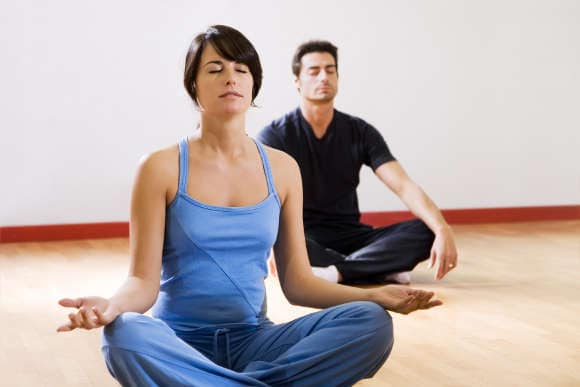One perk of choosing yoga for your fitness routine is that it's far from repetitive. Meaning, you will never run out of yoga poses to combine into sequences that you can do for every session. True, there ARE certain types of yoga where you follow a specifically set sequence of poses. However, this doesn't mean that your practice of yoga will simply revolve around doing the same poses day in and day out.
Whatever type of yoga class you sign up for, there are certain poses that you will inevitably learn. These basic yoga poses form part of the basics or the "fundamentals" of the asanas branch of yogic practice. Here are some examples of basic yoga poses that you will learn, whether in class or through yoga DVDs.
Lotus Pose
Most yoga classes and sessions start with the Lotus pose because it teaches students to calm their senses and listen (and later establish patterns) to their breathing. To do the Lotus pose, sit cross-legged on the mat while keeping your back straight and your shoulders relaxed. The Lotus is a meditative pose and puts your body in a position that makes it conducive to finding your core or center.
Tree Pose
In some ways, the Tree pose can be seen as the standing equivalent of the Lotus pose. It's also highly meditative but also challenges your sense of focus, concentration, and physical balance. Start doing the Tree pose by standing straight with your legs at hip-width distance. Shift your weight to one leg and lift the other facing sideward, such that your knee is bent and the foot is placed against the opposite thigh.
Mountain Pose
This standing pose also involves a level of meditation, and is usually done before or after the Tree pose. To do the Mountain pose, stand tall and plant your feet firmly on the ground. Keep your back straight and shoulders relaxed. On the inhale, raise your arms overhead, palms facing, and stretch them as high as you can without lifting your feet off the ground.
Standing Forward Bend
Also called Standing Forward Fold or Head to Knees pose, this pose requires a level of flexibility though is easily variable to suit students of all levels. Coming from Mountain pose, simply lower your arms along with your torso without bending your knees. You will feel a stretch in your legs / hamstrings, so go only as low as you can. With time and practice, eventually you will be able to bend low enough to make your forehead touch your knees.
Downward Facing Dog
This popular pose can be done coming from a Standing Forward Bend. When your upper body is bent low, simply let your palms land on the mat, and walk your hands forward until you find a comfortable angle. The end position for the Downward Dog will make your body appear like an inverted V. When doing this pose, remember to keep your legs and your back straight, and direct your gaze toward your feet.


